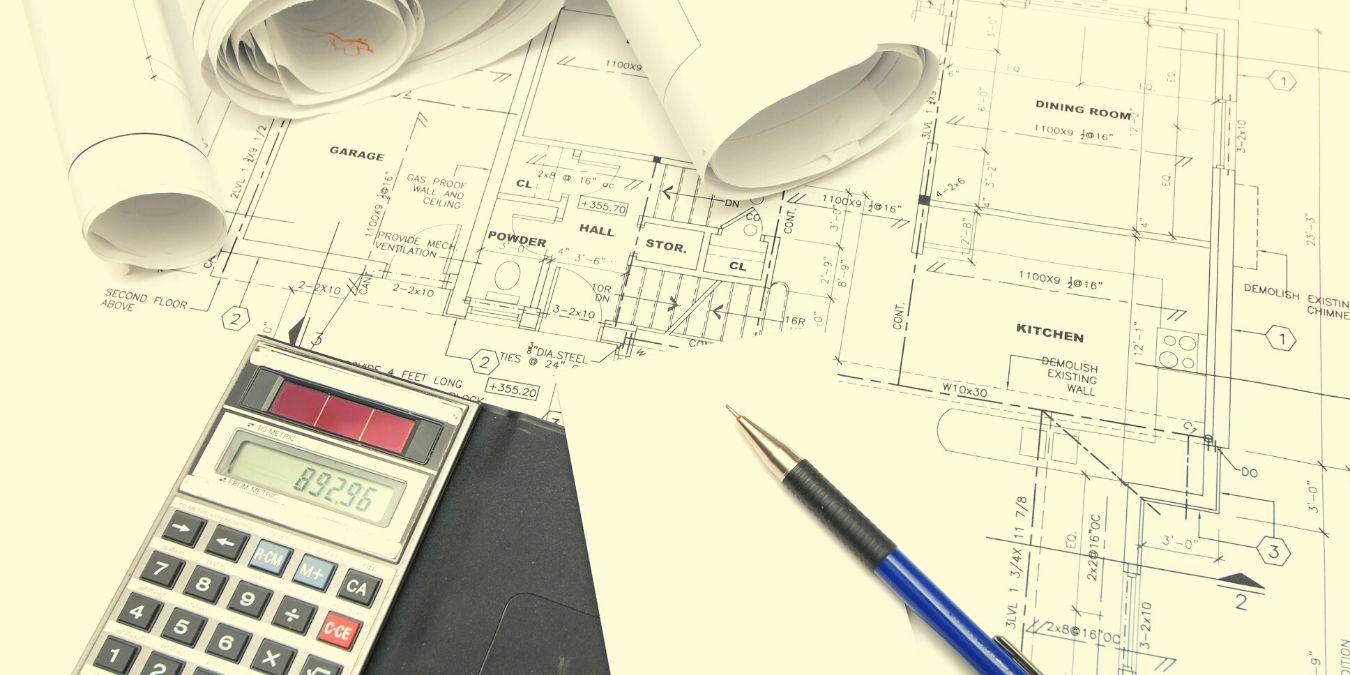Home>diy>Building & Construction>What Are Considered Soft Costs In Construction


Building & Construction
What Are Considered Soft Costs In Construction
Modified: March 6, 2024
Learn about soft costs in building construction and how they can impact project budgets. Understand the various expenses beyond materials and labor.
(Many of the links in this article redirect to a specific reviewed product. Your purchase of these products through affiliate links helps to generate commission for Storables.com, at no extra cost. Learn more)
Introduction – Overview of Soft Costs in Construction
In the world of construction, when most people think of costs, they usually focus on the hard costs – the tangible expenses related to materials, labor, and equipment. However, there is another significant aspect of construction costs that often goes unnoticed but can have a substantial impact on a project’s budget: soft costs.
Soft costs, also known as indirect costs or non-construction costs, are the expenses that are not directly tied to the physical construction process but are necessary for the successful completion of a project. These costs encompass a wide range of activities and services that are essential for the planning, coordination, and management of construction projects.
Soft costs typically account for a significant portion of a project’s total expenses, often ranging from 20% to 30% of the overall construction budget. While they may not be evident at first glance, these costs are essential for ensuring the quality, efficiency, and compliance of a construction project.
Understanding and properly accounting for soft costs is crucial for accurate project budgeting and successful project delivery. In this article, we will delve into the world of soft costs, exploring what they encompass and their importance in the construction industry.
Key Takeaways:
- Soft costs in construction are essential but often overlooked expenses that can account for up to 30% of a project’s budget. Understanding and managing these costs is crucial for successful project delivery.
- Factors such as project size, location, and specific requirements impact soft costs. Effective strategies, like value engineering and streamlined processes, can help manage and minimize these expenses.
Read more: What Is Considered Overhead In Construction
Definition of Soft Costs – Understanding the Concept of Soft Costs
Soft costs, as mentioned earlier, are indirect expenses that are not directly related to the physical construction process but are crucial for the successful completion of a construction project. These costs encompass various activities, services, and fees that contribute to the planning, coordination, administration, and management of the project.
Unlike hard costs, which can be easily quantified and attributed to specific construction activities, soft costs are more intangible and often require careful analysis and estimation. They are typically incurred during the pre-construction, construction, and post-construction phases of a project.
Soft costs can take many forms, including but not limited to:
- Professional fees: These include architect fees, engineering fees, and fees for other consultants involved in the design and planning process.
- Permitting and regulatory costs: Expenses associated with obtaining the necessary permits and complying with local building codes and regulations.
- Legal fees and insurance costs: Fees paid to lawyers or legal consultants to handle contracts, disputes, and insurance coverage.
- Financing and interest expenses: The cost of securing construction loans, interests on loans or bonds, and other financial charges.
- Marketing and advertising expenses: Costs related to promoting the project, advertising for tenants or buyers, and conducting market studies.
- Project management and administration fees: Salaries or fees for the project management team responsible for overseeing the construction process, project coordination, and administration.
- Consultant and professional service charges: Expenses for specialized consultants or professionals such as cost estimators, surveyors, or environmental consultants.
- Contingency and unforeseen costs: A portion of the budget allocated for unexpected expenses or unforeseen events that may arise during the project.
It is important to note that soft costs are not fixed and can vary from project to project. The specific soft costs incurred in a construction project depend on various factors, such as the size and complexity of the project, location, timeline, and specific requirements and constraints.
Now that we have a clearer understanding of what constitutes soft costs, let us explore the different categories of soft costs in construction.
Categories of Soft Costs
Soft costs in construction can be classified into several categories, each representing a specific aspect of project planning, coordination, and management. Understanding these categories is essential for accurate budgeting and effective cost control. Let’s explore the main categories of soft costs:
Planning and Design Costs:
These costs encompass the fees paid to architects, engineers, and other design professionals involved in the development of construction plans and specifications. This includes creating the conceptual design, preparing construction documents, and conducting value engineering to optimize the project’s efficiency and cost.
Permitting and Regulatory Costs:
Before starting any construction project, obtaining the necessary permits and complying with local building codes and regulations is essential. These costs include permit application fees, regulatory compliance expenses, and fees paid to third-party consultants for environmental impact assessments or other compliance requirements.
Read more: What Is Soft Landscape Construction
Legal Fees and Insurance Costs:
Construction projects often require legal expertise to handle contracts, disputes, and insurance coverage. Legal fees associated with drafting and reviewing contracts, resolving disputes, and ensuring compliance with regulations are considered soft costs. Additionally, insurance costs to protect the project and stakeholders from potential risks and liabilities fall under this category.
Financing and Interest Expenses:
Securing financing for a construction project incurs costs such as loan origination fees, bank fees, and interest expenses on construction loans. These costs are often substantial and are an essential part of the project’s financial planning.
Marketing and Advertising Expenses:
For projects involving commercial or residential properties, marketing and advertising play a crucial role in attracting potential buyers or tenants. Costs associated with conducting market studies, developing marketing materials, and advertising the project fall into this category.
Project Management and Administration Fees:
Successful project execution requires effective management and administration. The costs associated with project management staff, including salaries, benefits, and overhead expenses, are considered soft costs. This category also covers expenses for project-related software, technology, and administrative support.
Read more: What Are Construction Costs
Consultant and Professional Service Charges:
Constructions projects often require specialized expertise from consultants such as cost estimators, quantity surveyors, geotechnical engineers, and environmental consultants. The fees paid to these professionals for their services contribute to the soft costs of the project.
Contingency and Unforeseen Costs:
No matter how well a project is planned, unexpected events or unforeseen circumstances can occur, leading to additional expenses. Allocating a contingency budget to account for these unanticipated costs is an essential part of the project’s soft costs.
Understanding these different categories and their associated costs is crucial for accurate budgeting and ensuring the successful completion of a construction project within the allocated resources.
Factors Impacting Soft Costs
Soft costs in construction can vary significantly based on several factors that influence the complexity, scope, and requirements of a project. By understanding these factors, project stakeholders can better anticipate and manage soft costs. Here are some key factors that impact soft costs:
Size and Complexity of the Project:
The size and complexity of a construction project play a crucial role in determining the extent of soft costs. Larger projects or projects with intricate designs and specifications typically require more planning, design, coordination, and management efforts, resulting in higher soft costs. The number of stakeholders involved and the intricacy of the construction process can also contribute to increased soft costs.
Read more: What Is Cost-Plus In Construction
Location and Regional Variances:
Soft costs can vary based on the geographical location of the project. Different regions may have varying permit fees, regulatory requirements, labor costs, and environmental regulations. Additionally, projects located in remote or challenging areas may incur additional expenses related to logistics, transportation, and site accessibility. Considering location and regional variances is crucial when estimating soft costs.
Timeframe and Project Schedule:
The timeframe and project schedule have a direct impact on soft costs. Projects that need to be completed within shorter timeframes may require accelerated planning and design, increased coordination efforts, and additional resources, resulting in higher soft costs. On the other hand, longer construction timelines may incur higher financing and interest expenses. Efficient scheduling and effective project management can help optimize soft costs in relation to the project’s timeline.
Specific Project Requirements and Constraints:
Each construction project comes with its own set of unique requirements and constraints. Projects that require special features, custom materials, or advanced technology may involve higher soft costs due to specialized design, procurement, and installation processes. Constraints such as working in urban environments, historical preservation requirements, or dealing with existing structures can also increase soft costs as they require additional planning, coordination, and compliance efforts.
It is essential to carefully consider these factors during the initial planning and budgeting phases to ensure accurate estimation of soft costs. By understanding the impact of these factors, project stakeholders can make informed decisions to optimize soft costs and ensure efficient project delivery.
Strategies to Manage Soft Costs
Managing soft costs effectively is vital for maintaining a construction project’s budget and ensuring its overall success. By implementing the right strategies, project stakeholders can optimize soft costs and minimize unnecessary expenses. Here are some key strategies to consider:
Read more: What Is Indirect Cost In Construction
Effective Project Planning and Budgeting:
A well-planned and accurately budgeted project lays the foundation for effectively managing soft costs. This involves conducting thorough research, assessing the project requirements, and setting realistic budgets for each soft cost category. An organized and comprehensive project plan with detailed timelines and milestones can help identify potential cost-saving opportunities and prevent unexpected expenses.
Utilizing Experienced Professionals and Consultants:
Engaging experienced professionals and consultants is critical for managing soft costs. By partnering with knowledgeable architects, engineers, and other specialized consultants, stakeholders can benefit from their expertise in value engineering, cost control, and efficient project management. These professionals can help identify cost-saving opportunities, streamline processes, and avoid potential costly mistakes.
Streamlining Approval and Permitting Processes:
The approval and permitting processes can cause significant delays and increase soft costs. Streamlining these processes by working closely with local authorities, understanding the requirements and timelines, and ensuring all the necessary documentation is in order can help save both time and money. Early engagement with regulatory agencies and proactive communication can help avoid unnecessary expenses associated with permit revisions or inspections.
Implementing Value Engineering and Cost-Saving Techniques:
Value engineering involves assessing the project design and specifications to identify opportunities for cost savings without compromising quality. By analyzing materials, systems, and construction methods, stakeholders can find alternative solutions that offer the same functionality at a lower cost. Additionally, implementing cost-saving techniques such as bulk purchasing, competitive bidding, and standardization can help reduce soft costs associated with procurement and construction.
Regular monitoring and control of soft costs throughout the project’s lifecycle are vital. This includes tracking expenses, comparing actual costs against the budget, and identifying areas where adjustments can be made. Transparent communication and collaboration among project stakeholders are essential to address any potential issues and ensure that soft costs are managed effectively.
By applying these strategies, construction project stakeholders can proactively manage soft costs, maintain budget discipline, and achieve successful project completion within the allocated resources.
Case Studies – Real-life Examples of Soft Costs in Construction Projects
To illustrate the impact and significance of soft costs in construction projects, let’s explore some real-life case studies that highlight various aspects of soft costs:
Case Study 1: High-Rise Commercial Building
In a high-rise commercial building project, the soft costs played a significant role in the development process. The planning and design costs involved hiring an experienced architect and engineering team to create a functional and aesthetically appealing design. The permitting and regulatory costs included obtaining numerous permits and adhering to strict building codes and safety regulations. Legal fees were incurred for reviewing contracts, resolving zoning issues, and ensuring compliance.
Financing and interest expenses were crucial in this project, as securing loans, negotiating interest rates, and managing the financial aspects were essential for funding the construction. Marketing and advertising costs were incurred to attract potential tenants and promote the building to the target market. Project management and administration fees covered salaries, overhead costs, and technology expenses for the project management team.
Consultant and professional service charges involved engaging specialized consultants such as interior designers, structural engineers, and acoustics experts to ensure the building met the required standards. Lastly, contingency and unforeseen costs were allocated to handle unexpected construction delays and changes in scope.
Case Study 2: Residential Construction Project
In a residential construction project, soft costs played a crucial role in delivering a high-quality home to the end-user. Planning and design costs involved working closely with an architect to create a custom design that met the client’s needs and preferences. Permitting and regulatory costs included obtaining necessary permits for construction and complying with local building codes and regulations.
Legal fees were incurred for reviewing contracts and handling any disputes or legal requirements throughout the project. Financing and interest expenses were essential for securing construction loans and managing the financial aspects of the project. Marketing and advertising costs were incurred to promote the property and attract potential buyers.
Project management and administration fees covered the salaries and overhead costs of the project management team, ensuring efficient coordination and communication with contractors and subcontractors. Consultant and professional service charges included fees paid to specialized consultants such as landscape architects, interior designers, and energy efficiency consultants.
Contingency and unforeseen costs were allocated to handle any unexpected issues during construction, such as material price fluctuations or changes in project scope. Additionally, soft costs related to post-construction activities, such as warranty and customer support, were also considered.
These case studies highlight the diverse range of soft costs involved in different construction projects. From high-rise commercial buildings to residential homes, understanding and managing soft costs is essential for successful project delivery.
Conclusion – Importance of Considering Soft Costs in Construction Planning and Budgeting
Soft costs are often overlooked but play a crucial role in the overall budget and success of construction projects. They encompass expenses that are indirectly related to the physical construction but are necessary for planning, coordinating, and managing a project. By understanding and considering these soft costs during the planning and budgeting stages, project stakeholders can optimize project delivery and maintain financial stability.
One of the key reasons why considering soft costs is essential is their significant contribution to the total project expenses. Soft costs typically account for a substantial portion of the overall construction budget, often ranging from 20% to 30%. Failing to accurately estimate and manage these costs can lead to budget overruns, reduced profitability, and potential project delays.
Moreover, soft costs are integral to various crucial aspects of project execution. Effective planning and design play a crucial role in the success of a project, as well as obtaining the necessary permits and complying with regulatory requirements. Utilizing experienced professionals and consultants not only ensures quality results but also minimizes potential risks and costly mistakes.
Soft costs related to financing and interest expenses, marketing and advertising, and project management and administration are all essential to the smooth execution of a construction project. Proper allocation of resources and efficient cost control in these areas can significantly impact the project’s overall success.
Furthermore, considering soft costs helps in managing project-specific requirements and constraints. Each project comes with its own unique challenges, such as specialized features, historical preservation requirements, or working in remote locations. Accounting for these factors in the soft cost budget allows for adequate planning and allocation of resources to navigate these challenges effectively.
In conclusion, soft costs are an indispensable part of construction projects, and their careful consideration is crucial for effective planning and budgeting. By recognizing the importance of soft costs, project stakeholders can make informed decisions, mitigate risks, optimize project delivery, and ensure financial stability. Understanding the categories of soft costs, the factors that impact them, and implementing strategies to manage them can significantly contribute to the successful completion of construction projects.
Frequently Asked Questions about What Are Considered Soft Costs In Construction
Was this page helpful?
At Storables.com, we guarantee accurate and reliable information. Our content, validated by Expert Board Contributors, is crafted following stringent Editorial Policies. We're committed to providing you with well-researched, expert-backed insights for all your informational needs.











0 thoughts on “What Are Considered Soft Costs In Construction”